Plants and animals - adapting to the rainforest
Plant adaptations
The following adaptations allow plants to survive in the conditions of the rainforest.
- Lianas - these are woody vines that have roots in the ground but climb up the trees to reach the sunlight. Their leaves and flowers grow in the canopy.
- Tree trunks - these are tall and thin to allow trees to reach the sunlight. The bark on these trees is smooth to allow water to flow down to the roots easily.

Drip tips - plants have leaves with pointy tips. This allows water to run off the leaves quickly without damaging or breaking the leaves.

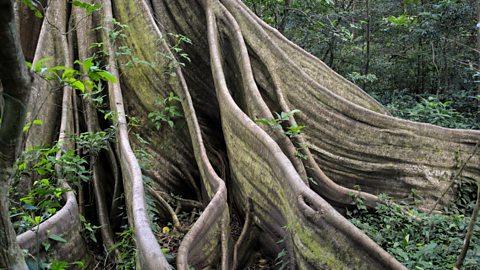
buttress rootsA tree root that grows above the forest floor to provide nutrients and support. - large roots have ridges which create a large surface area that help to support large trees.

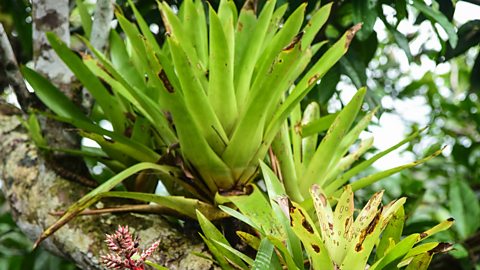
epiphytePlants which live on the branches of trees high up in the canopy of the tropical rainforest. - these are plants which live on the branches of trees high up in the canopy. They get their nutrients from the air and water, not from the soil.

Animal adaptations
Many animals have adapted to the unique conditions of the tropical rainforests.
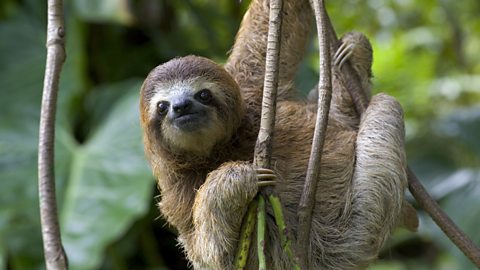
The sloth uses camouflageAn ability to blend in with a background. and moves very slowly to make it difficult for predatorsAnimals that catch and eat other animals. to spot.

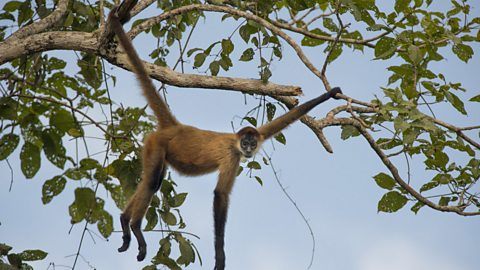
The spider monkey has long, strong limbs to help it to climb through the rainforest trees.


The flying frog has fully webbed hands and feet, and a flap of loose skin that stretches between its limbs, which allows it to glide from plant to plant.

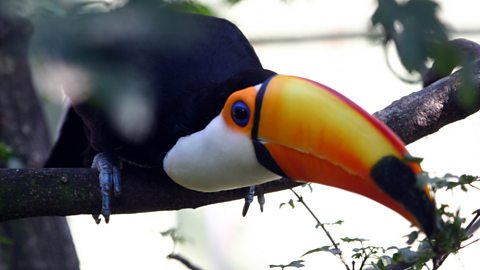
The toucan has a long, large bill to allow it to reach and cut fruit from branches that are too weak to support its weight.
